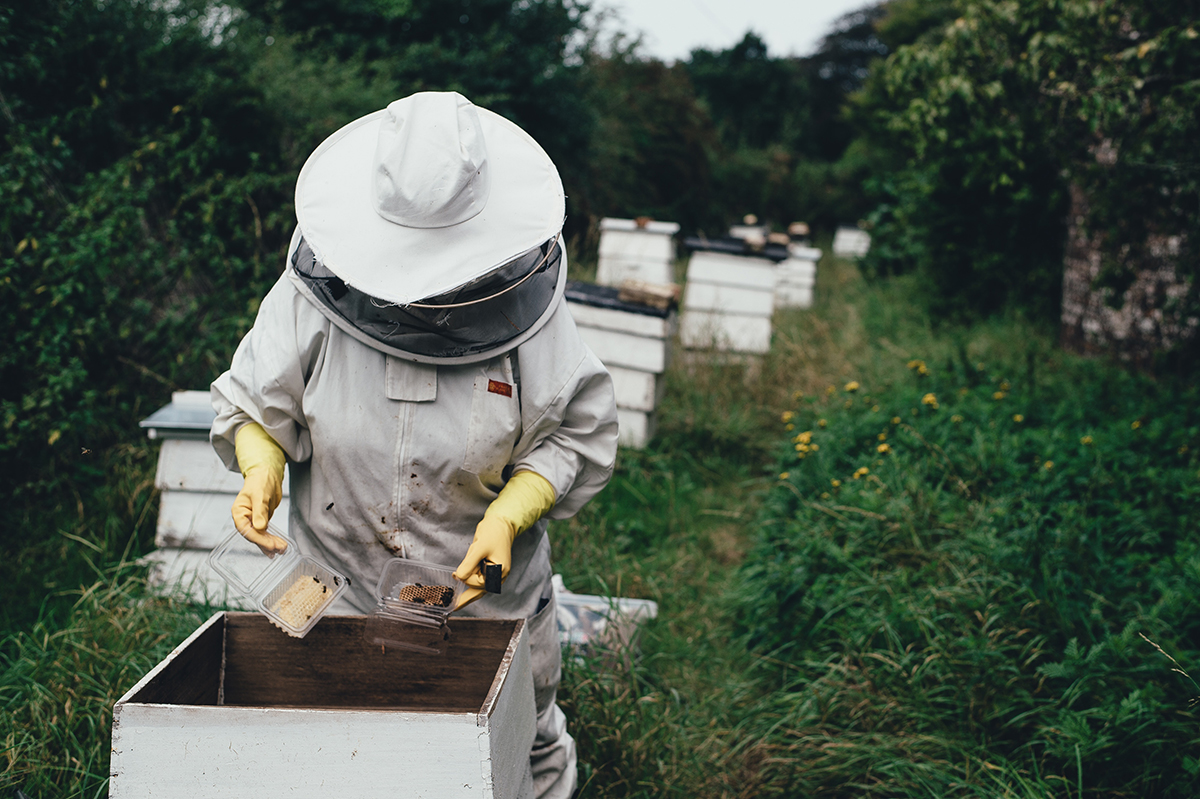First things first. Some Biology.
What is a bee? They are flying insects that are extremely important for humankind and are closely related to ants, wasps, and hornets. There are almost 20,000 species of bee on the planet. Every land surface apart from the Antartica have bees. Bees are crucial for pollination of our flowers, fruit, and vegetables on Earth. Almost a third of all our crops are pollinated by bees. Some examples of food they help pollinate for us are; pears, cherries, peaches, nuts, melon, avocado, cucumber. Without bees, our crops would be much smaller in size and poor quality.
What is pollination?
Pollination is very important for the life cycle of plants. Insects, birds and even the wind take pollen between plants that are flowering. This means they can make seeds and therefore reproduce (have babies!) and keep their line alive.
Today we will be concentrating on Honey Bees as these are the most well known and have the richest history to share with you! Honey Bees live in colonies (huge families basically) inside their hive (their home!). Working like a well-oiled machine, they together make and store honey in a comb of wax. In these hives, there are three jobs that you are born into.

-
Queen Bee
- We love a bit of girl power and she is just that. There is one to every hive and she is the head. In birthing season she can give birth to up to 2000 eggs… A DAY! Ouch…
- She controls the atmosphere in the hive by letting off chemicals that control the behavior of the rest of them.
- It is luck as to whether you become a Queen Bee. It just comes down to which cell you got put into after birth.
-
The Worker Bee
- These are female bees that outnumber the males about 100 to 1.
- They do all the work inside the hive as well as collecting nectar and pollen outside the hive. They do everything that needs doing in the hive except reproduction.
- They all have different jobs. To name a few; Nursing bee (feeding eggs), Cleaner bee, Builder bee (creating honeycomb), Nectar Ripeners (ripening the pollen that’s come from the outside by flapping their wings to evaporate any water in it.
-
Drones
- Male bees with no stingers.
- Their roles are to mate with Queen bees from a hive other than theirs, who haven’t been mated with yet.
- After successful mating, they soon die. A life expectancy of a drone bee is about 90 days.
In the last five years 1/3 of the world’s bee population has disappeared. This is thought to be due to the increased use of harmful pesticides that are poisoning the bees and in return are poisoning their hives when they return to them.
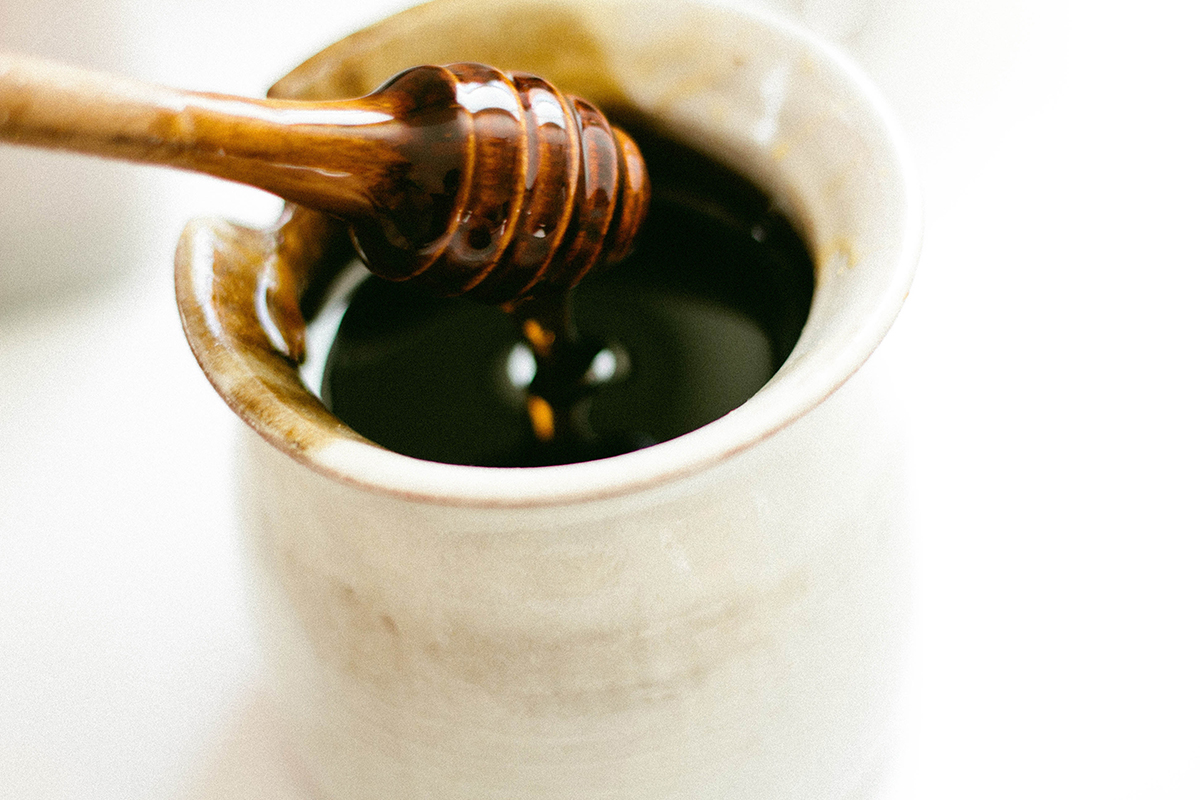
Bees & Honey – a tale as old as time
- In 1924 in Bicorp, near Valencia, Spain a local teacher was exploring in Cuevas de la Arana/Spider Caves. He came across something quite extraordinary, a cave painting of a human climbing on ropes or a ladder, collecting honey from hives attached to trees. These paintings are thought to be anywhere from 7000-15,000 years old.
- In 2015, Archeologists discovered honey in a 3000 year old Egyptian tomb. The honey was still edible! We know that the ancient Egyptians were beekeepers as they documented the process in drawings.
- In Pre-Columbia, the Mayan civilization cultivated stingless bees and harvested their honey. They regarded bees as sacred.
- All these societies used honey for medicinal purposes too.
In fact, every civilization and even religion regards honey with the utmost respect.
Hinduism: 1 of 5 elixirs of immortality.
Judaism: Symbol of the new year.
Christianity: Mentioned in the Old and New Testament. John the Baptist lives off locusts and honey in the desert.
Buddhism: Madhu Purnima (Honey Full Moon Festival), celebrates the legend that when Buddha goes into the desert he is brought honey by a monkey.
Islam: A whole Surah in the Qur’an is translated as ‘The Honey Bee’.
So it is plain to see that the relationship between humans and bees goes back to the start of history. It is a rich history of humans caring for them and in turn harvesting the honey for food and health reasons.
What can we do to help keep bees thriving?
Bees need food all year round. So planting seasonal and all year round plants in your garden or balconies that Bees like is super helpful. Having landing pads in water bowls for them to drink from in hot weather and sugar solutions to revive them is important too. Below are some activities you can do with your little ones to get them involved in asking questions and helping nature. We decided to plant a little herb garden with Mint, Thyme, and Rosemary; some of the herbs that bees like.
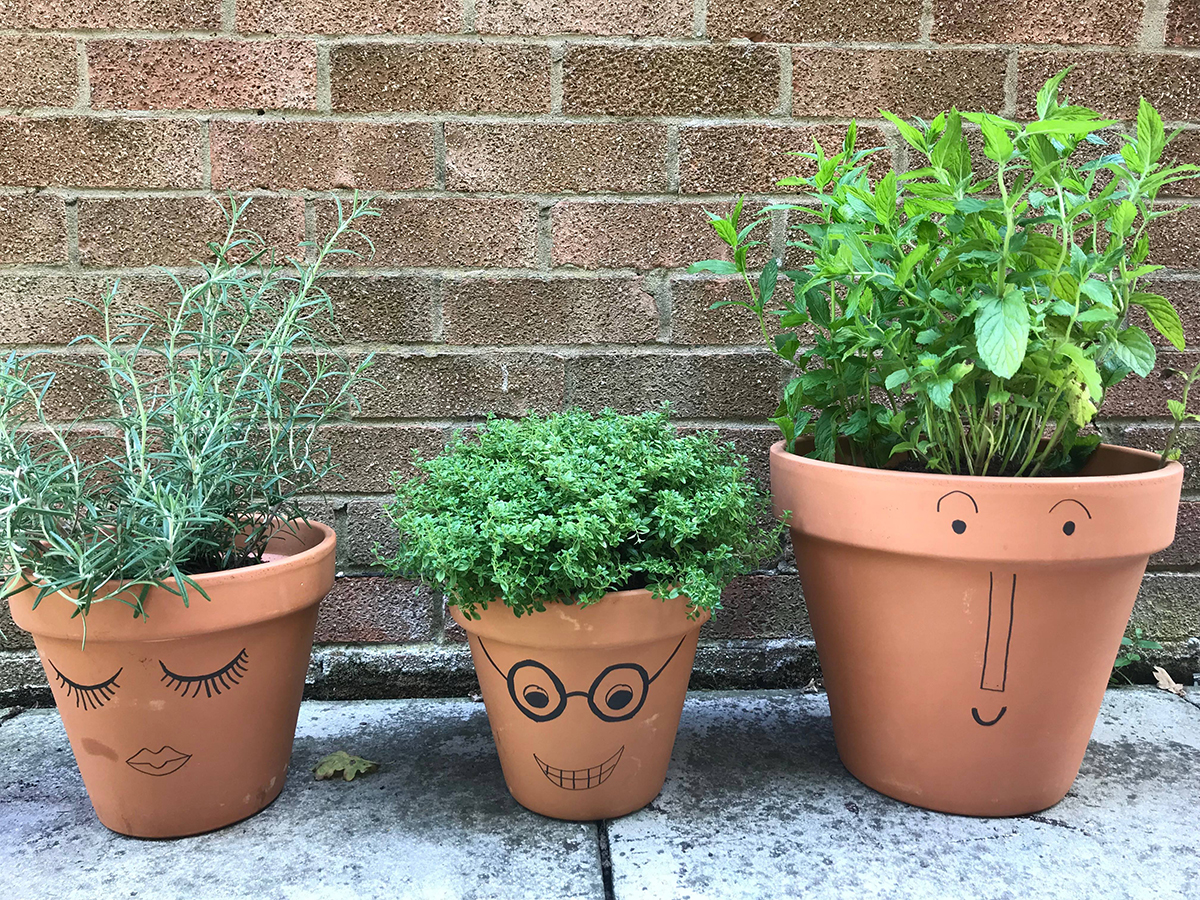
Crazy Hair People Pots
What you will need:
- Soil
- Three terracotta pots
- A trowel
- Gardening gloves
- A permanent black marker pen (we used a Sharpie)
- Bee loving plants, enough to go in your plant pots
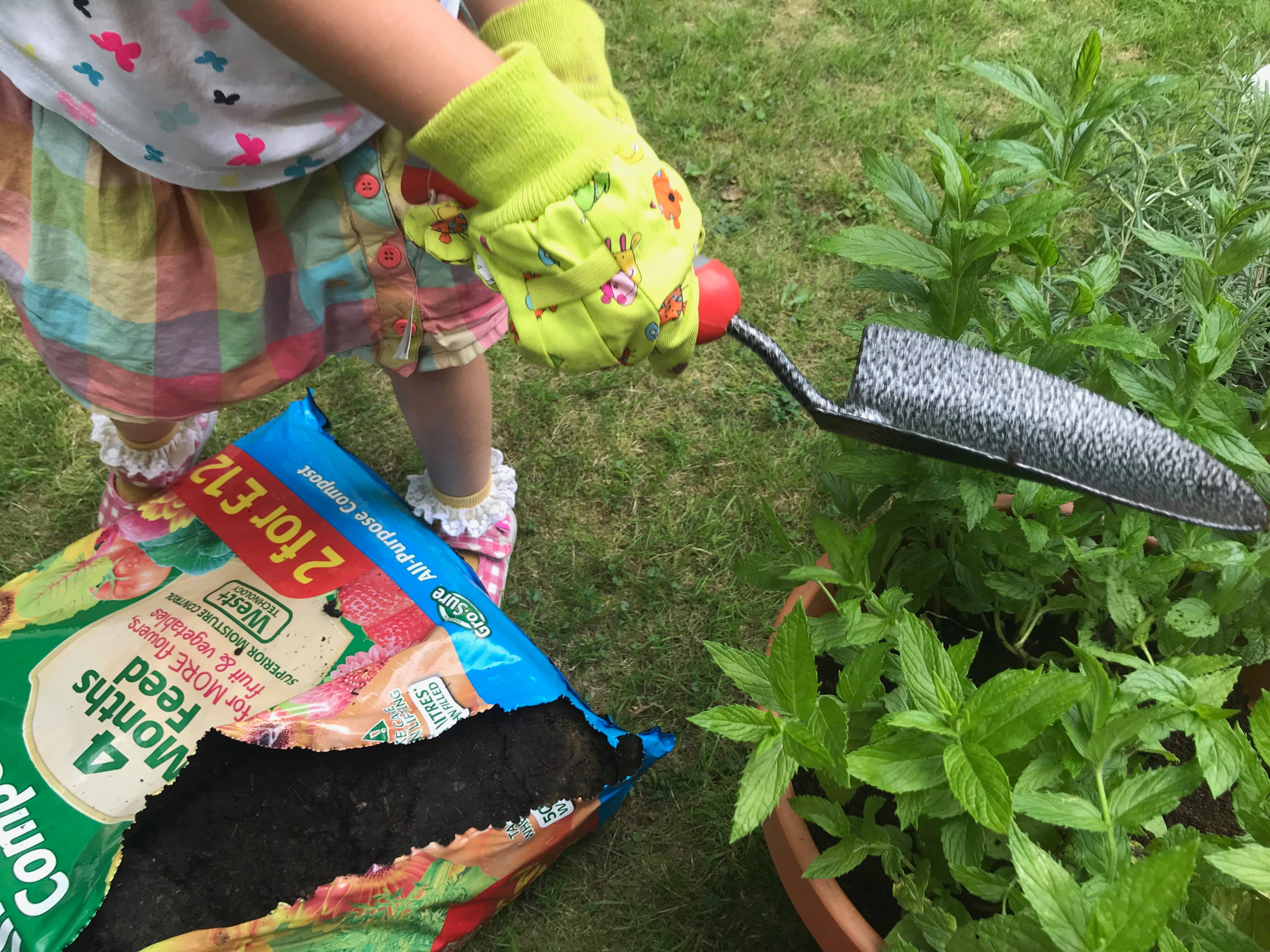
- Loosely research what plants bees like.
- Go to your local garden center and pick out some clay terracotta pots. They can be the same size or different. Buy at least three.
- While you are at your garden center go round with your children and have a look at what is on offer. Bees feed on plants all year long so you will be able to find something they like at any time of the year. It is important to have something in all seasons for them to collect from. In some centers you will find on the plant’s tag whether or not Bees particularly like them with a little image of a bee. Buy as many plants as you have pots.
- Before you leave the garden center, buy potting soil and if you require it a trowel and gardening gloves.
- At home draw some faces on your terracotta pots with your permanent marker.
- Now get your child to use the trowel to put some soil into each of the pots. Layer them with enough soil that you cannot see the bottom. Depending on how deep your pot is and how big the plant you are putting in it, fill it up a quarter with the soil.
- Turning the plants upside down gently remove them from the plastic pot they came in. Put the plastic pot to the side and place the plant on top of the soil in your pot.
- Using the trowel put more soil around the plant and gently pat it all down. Repeat with all of the pots.
- Water liberally. Now you can keep an eye out to see whether any Bees come your way.
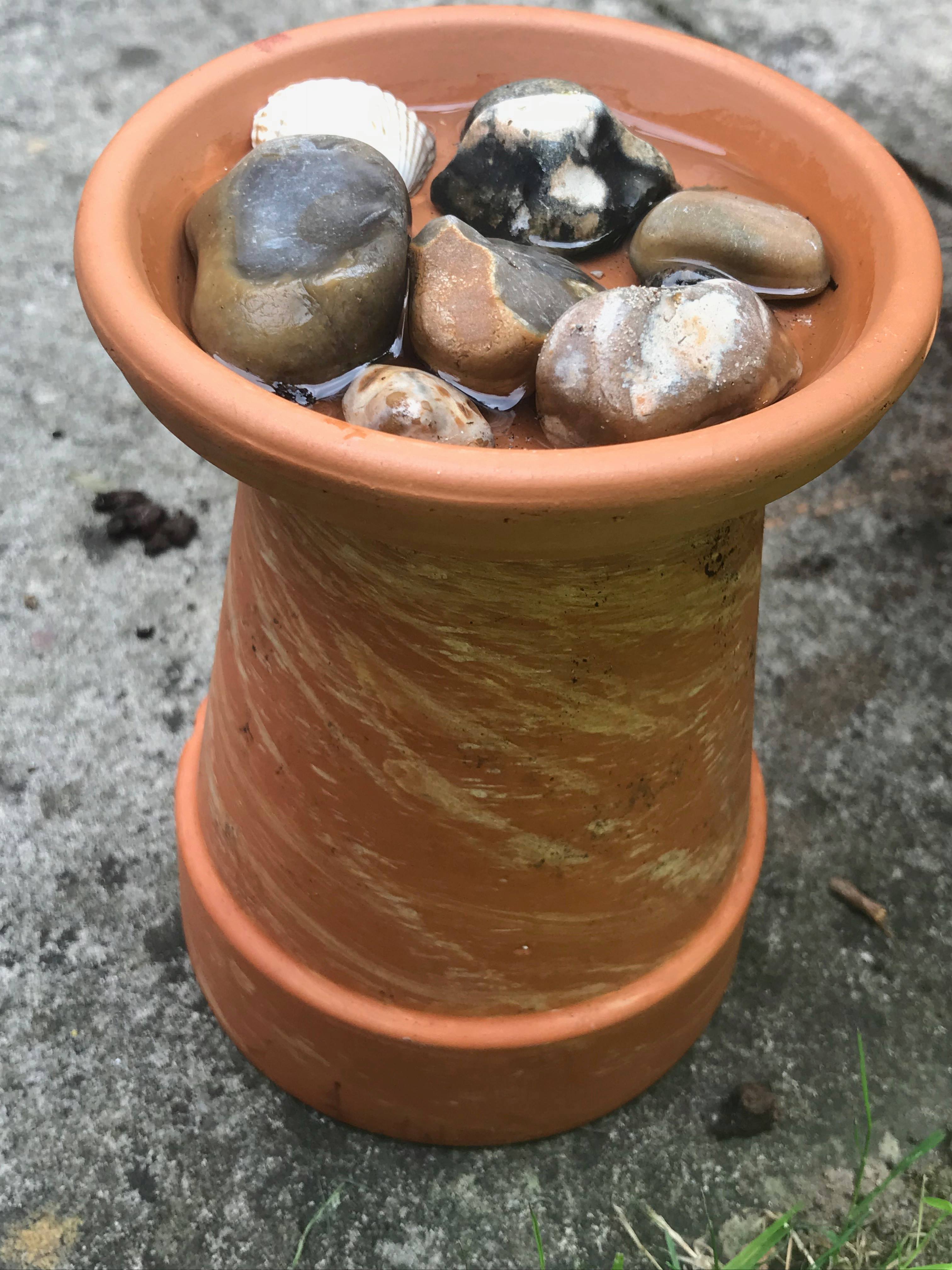
Make A Bee Water Fountain
Creating a Bee Water Fountain is really simple. Putting out a bowl of water is not enough for them as there are no landing strips for them to sit on to drink. If you are going to create a little water area for them, make sure you place things like rocks or shells in and breaking the skin of the water so that they have somewhere to rest those tired wings.
Revive-A-Bee-Solution
You can often see bees not moving for a really long time. The wrong misconception may lead to the assumption that they are dead, but they aren’t! These bees will have flown miles and miles and have miscalculated their journey back to the hive. They are exhausted and in need of some sustenance. What can I do? You can mix a special drink for them!
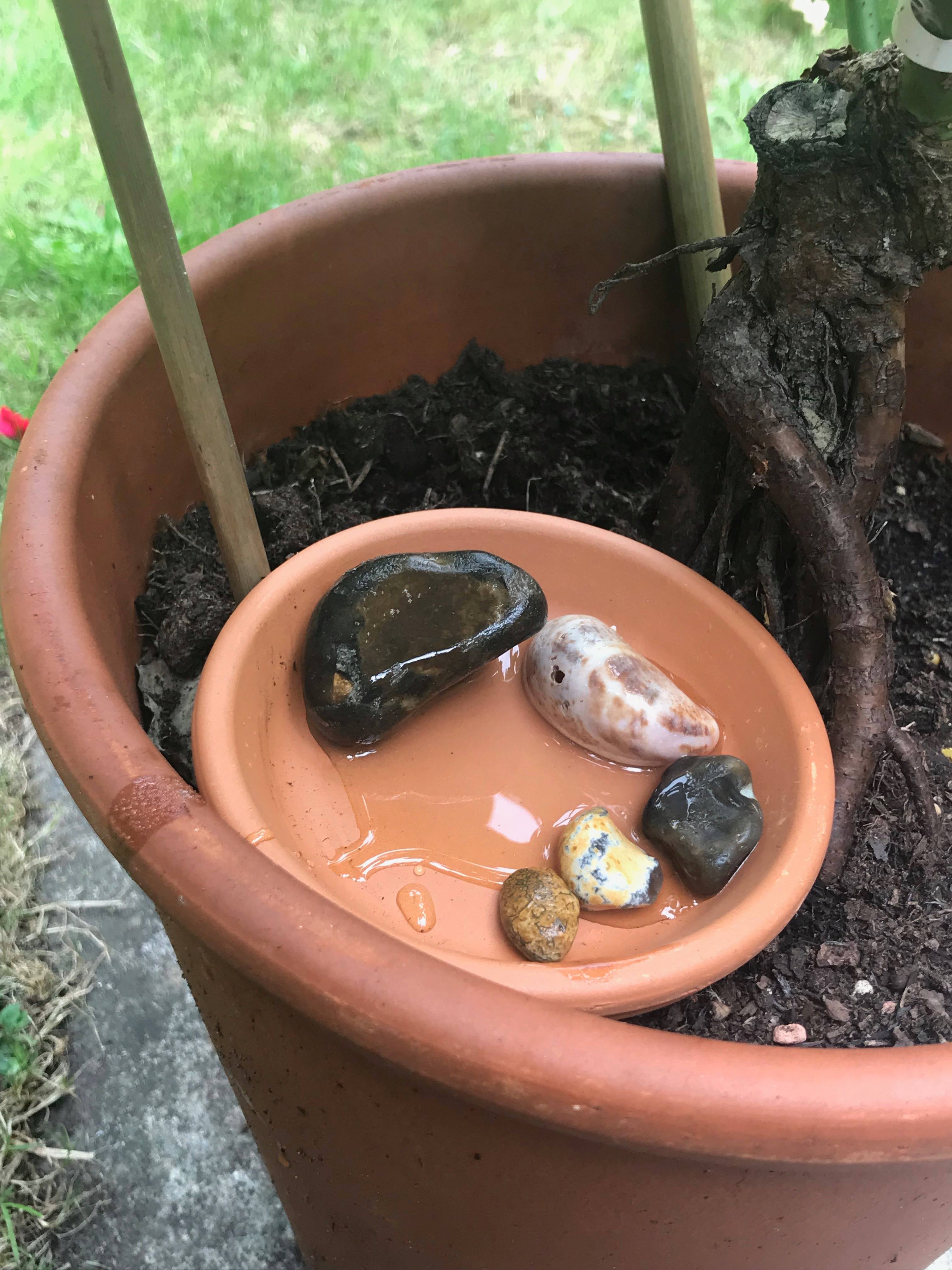
Recipe:
- Mix 1 tablespoon of water with 1 tablespoon of sugar until they are dissolved.
- Either place into a shallow plate or simply place on a spoon on a garden table or near where you have spotted the bee.
Wait, wait, I forget to add one more fact. What do bees like with their sushi? Wasa BEE! Also, just in case you didn’t know, a bee that lives in America is called a USB… isn’t it? Ok, Ok, I’ll quit pollen your leg. Though on a serious note, did you know Wasps are really nothing more then wanna-bees? Sigh. Bee puns aren’t that great, I just don’t see what the hive is about.
If you’re looking for more on Bees, check out this post from World Honeybee Day!
Don’t forget to follow us on Twitter, Instagram, Pinterest, and Facebook!
 Contributor
Contributor
Grace Selous Bull is an arts education author and freelance blogger. Her book, ‘Potty About Pots: arts and crafts for home and school’ is aimed at children from 5-12 years old and takes them through a journey of ceramics through time. She is a full time Mummy of two girls, both of whom love being creative, and is married to her husband, Andrew, who does not.
Original content © 2018 Super Simple. Not to be reprinted without express written permission. Terms of Service.

